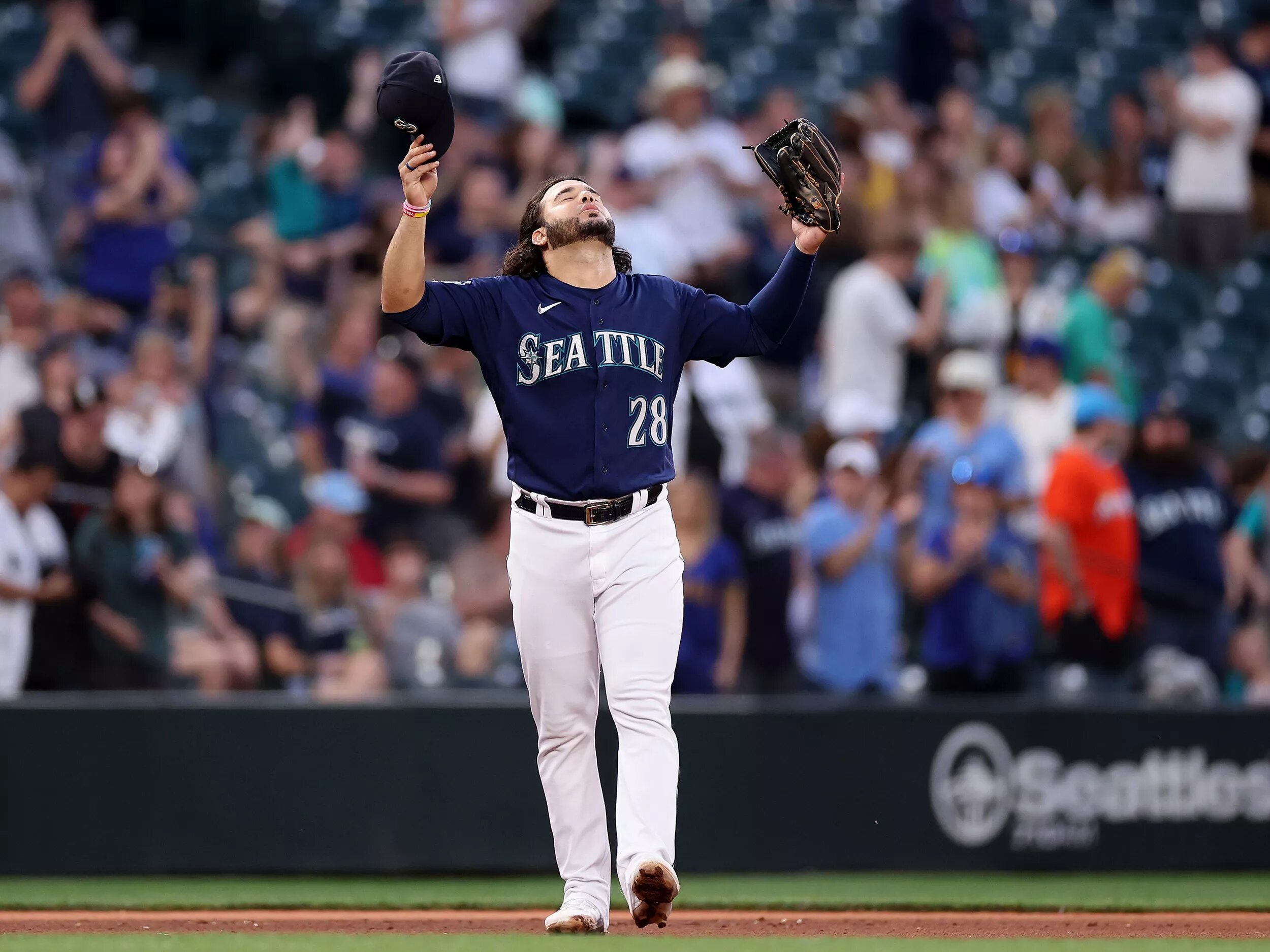They’re going to miss Eugenio Suarez. They’ll miss his positive energy, his playful leadership, his ever-present smile.

And they’ll almost certainly miss his glove at third base.
Suarez is gone, traded away to Arizona in the Mariners’ first salary-shedding move of the offseason. In 2023, Suarez played every game and was an elite defensive third baseman, leading all MLB players at that position in putouts.
Perhaps the Mariners can recreate most, if not all, of Suarez’s offensive production with their new plan to employ Josh Rojas and Luis Urias in a third-base platoon this season.
But the big question inside the biggest question surrounding the Mariners’ overhauled lineup is how the platoon partners will handle defense at the hot corner. We’ll explore that, and more, as we continue our Mariners spring training preview with an analysis of third base.
Who’s back
Rojas returns after arriving in the July 31 trade from Arizona, along with Dominic Canzone and prospect Ryan Bliss, for closer Paul Sewald.
Rojas helped fill a sizable hole at second base after his arrival, posting a .272/.321/.400 (.721 OPS) slash line with a 103 OPS+ (100 being average) in 134 plate appearances with the Mariners.
This is at least a familiar position for Rojas, who opened last season in Arizona in a third-base platoon with veteran Evan Longoria. Rojas has spent the bulk of his career bouncing between third (1,169 innings) and second (1,016 innings).
A left-handed-hitting 29-year-old, Rojas figures to see the bulk of his time as the strong side of the third-base platoon this season. But he could also shift into a super-utility role. Over the past five seasons, he has at least 43 games of experience at five positions — third base, second base, shortstop, left field and right field.

New face
Urias was the Mariners’ first acquisition of the offseason, coming over from Boston in a Nov. 17 trade for reliever Isaiah Campbell.
A former top prospect in the Padres system, the right-handed-hitting Urias broke through in 2021 with the Brewers. He had 23 home
Urias, 26, had the worst season of his career in 2023. He injured a hamstring on opening day with Milwaukee, missed more than two months and never really recovered.
When he returned to the lineup, he hit just .145 with a .535 OPS over the next 20 games before the Brewers demoted him to Triple-A. He was traded to Boston a couple days later for a minor-league pitcher.
In 109 plate appearances for the Red Sox, Urias hit .225 with two home runs, 26 strikeouts, 14 walks and a .698 OPS.
Interesting nugget: In August, Urias hit grand slams in consecutive plate appearances (over two games), the first MLB player to do that since Josh Willingham of the Nationals in 2009. He was the first Boston player to hit a grand slam in consecutive games since Jimmie Foxx did it in 1940.
Trending up
Rojas was particularly productive during the Mariners’ hot stretch in August, hitting .358 with three home runs, four steals, 16 runs scored and a .970 OPS across 57 plate appearances from Aug. 11 to Aug. 31.
Trending down
The Mariners have been spoiled over the past two decades with three of game’s best defensive third basemen.
Adrian Beltre, who will be inducted into the Hall of Fame this summer, won his first two Gold Gloves in Seattle. Kyle Seager won a Gold Glove and was the club’s most dependable player in his decade manning the position. And Suarez, over the past two years, was a pleasant surprise with his glove work — and he should have been, at the very least, a finalist for the Gold Glove last year.
According to Statcast metrics, Suarez ranked as the third-best third baseman in the majors last season, recording 11 outs above average (OAA). In overall fielding metrics, Suarez was tied with Julio Rodriguez as the Mariners’ most valuable defensive player.
On paper, there’s going to be a dropoff in defensive quality at third base this year, and for a team that is constructed, above all, to prevent runs — well, that should be a concern.
How the Mariners handle the hot-corner transition will be scrutinized this spring.

